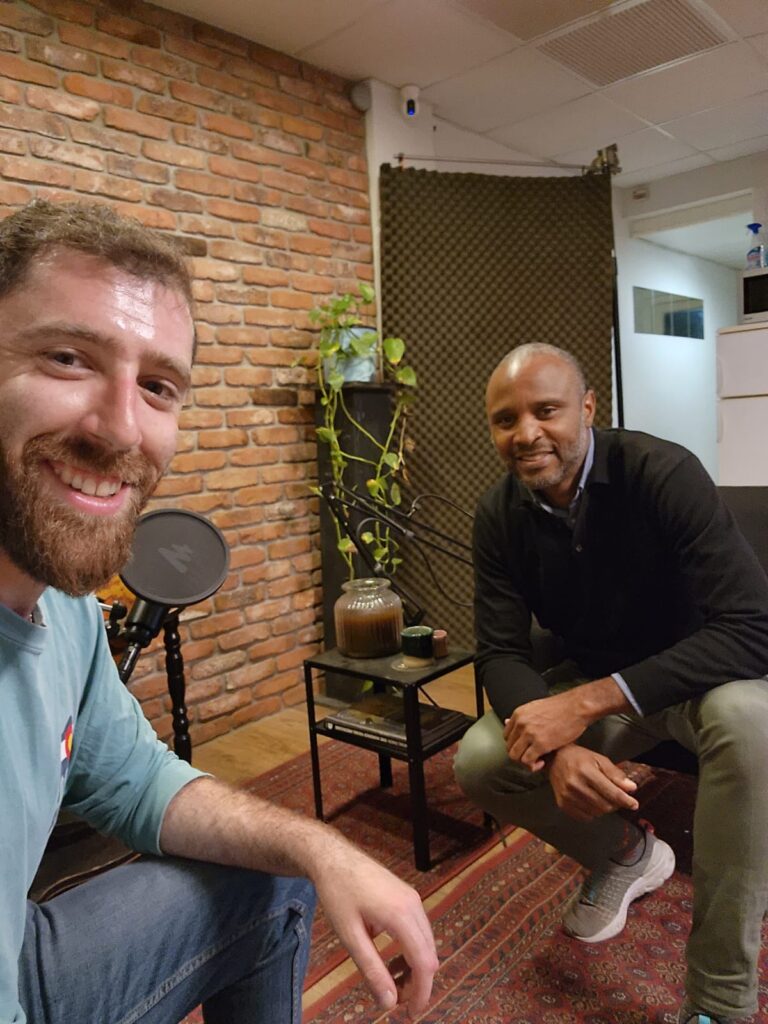Green architecture and sustainable design are two critical elements of construction leading the building industry in its pursuit to create a better environment for people to live, work, and play in. These concepts are based on the idea of using resources efficiently and responsibly, minimizing the impact on the environment. However, often not known is that these ideas are also aimed at improving the quality of life for everyone who uses these spaces, so that they are healthy, motivated occupants.
In Episode 91 of High Tech on the Low, Ryan Clarke, a LEED-accredited professional and Director of Sustainability at Livolt Energy Engineering, sees green architecture and sustainable design as not just important but a fundamental need for our future. Amongst the topics on Ryan’s mind include implementing LEED alongside the development of the WELL standard, driving sustainability in the US and Israel, and opportunities for entrepreneurs and tech engineers in the field. As Ryan describes, “Green architecture and sustainable design are fundamental concepts for optimizing your space, for the world and for people.” And with major energy concerns at an international-level and global greenhouse gas emissions on the rise, the time to understand green architecture is now.

Listen to the Episode Now on Spotify!
Listen to the Episode Now on Apple!
Standards Driving Adoption
The building industry needs to shift towards sustainable practices to reduce its impact on the environment. One particular way the industry has been making the change is through LEED (Leadership in Energy and Environmental Design), a globally recognized green building certification system that provides a framework for designing, constructing, operating, and maintaining sustainable buildings. Along with US adoption, Ryan mentioned, “LEED has been successful in Europe, with many projects across the region” and it has even grown in acceptance in other parts of the world like in Israel, for example, where green building has taken off. LEED has been critical in successfully shaping the future of green architecture and energy consumption, having focused on how reduce costs in the long run for in energy building projects.
That being said, Ryan is also hopeful regarding a lesser known sustainable design standard, the WELL Building Standard, which focuses on the health and well-being of those people who come and actually use the building. The standard includes factors such as air quality, water quality, lighting, and thermal comfort, among others. “The WELL Building Standard complements LEED by focusing on the people who occupy the building. It aims to improve their health and well-being by creating a healthy environment through a space that impacts the environment less.” In the end, a building is just a building. Without healthy occupants who are motivated to occupy the space, then the sustainable design is for nothing. Thus, Ryan emphasizes that sustainable design and green architecture must lead the way, as they not only benefit the environment, but people’s overall health.
Business Abounds in Sustainability
Technology plays a crucial role in sustainable design and green architecture. Beyond the altruistic outlook on green building projects, sustainable construction and design offer many new and exciting opportunities for entrepreneurs and tech experts looking to make an impact. Ryan spoke about the role of technology in the field, saying, “Technology has a significant role to play in sustainable design. Think of AI that could help and in the fraction of the time [of architects] and optimize space to better impact the environment positively.” AI design assistants are already being used to analyze data from different sources, such as weather patterns, energy consumption, and building materials, to provide recommendations for energy-efficient and sustainable designs that are redefining green architecture today.
In addition to AI advancements, Ryan also emphasizes that there are other areas for entrepreneurs to create new solutions and address sustainability concerns in construction. For instance, HVAC systems consume a significant amount of energy in buildings, and optimizing their performance can lead to significant energy savings. Data modeling for HVAC systems can help engineers and building operators simulate different scenarios and analyze the system’s performance. This process then allows them to optimize the system’s settings, such as temperature and humidity levels, to reduce energy consumption and improve indoor air quality.
With the advancement of technology, it has become easier to design and construct buildings that are energy-efficient, environmentally friendly, and offer a healthy living and working environment. Moreover, LEED and the WELL Building Standard are two globally recognized certifications that provide a framework for designing and constructing sustainable buildings and promoting their integration into society. “Shifting towards sustainable practices can reduce the impact of the building industry on the environment,” Ryan states and with the help of entrepreneurs and innovative solutions, we can create a better future for ourselves and generations to come.





















